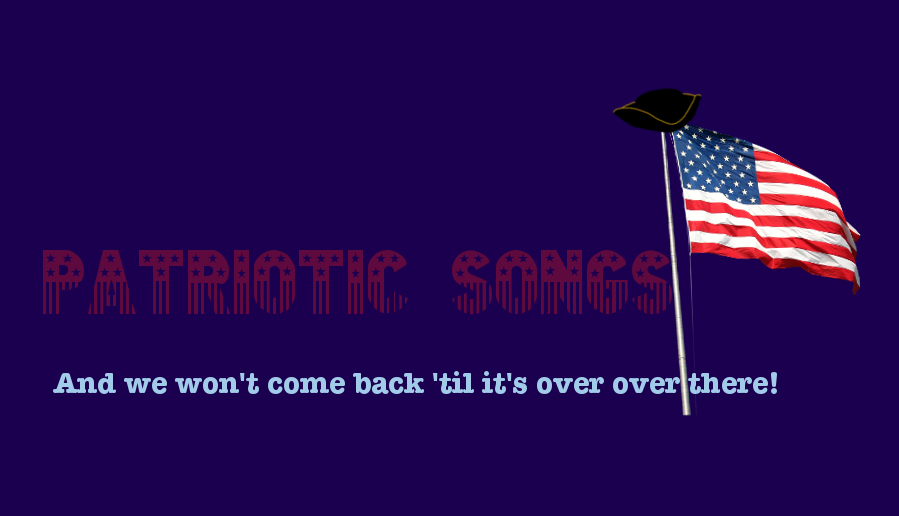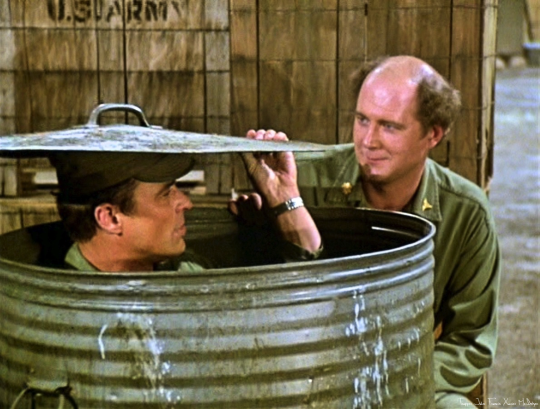
Rally ‘Round the Flag
Yes, we’ll rally round the flag, boys,
We’ll rally once again,
Shouting the battle cry of Freedom,
We will rally from the hillside,
We’ll gather from the plain,
Shouting the battle cry of Freedom.
CHORUS:
The Union forever,
Hurrah! boys, hurrah!
Down with the traitors,
Up with the stars;
While we rally round the flag, boys,
Rally once again,
Shouting the battle cry of Freedom.
We are springing to the call
Of our brothers gone before,
Shouting the battle cry of Freedom;
And we’ll fill our vacant ranks with
A million free men more,
Shouting the battle cry of Freedom.
CHORUS
We will welcome to our numbers
The loyal, true and brave,
Shouting the battle cry of Freedom;
And although they may be poor,
Not a man shall be a slave,
Shouting the battle cry of Freedom.
CHORUS
So we’re springing to the call
From the East and from the West,
Shouting the battle cry of Freedom;
And we’ll hurl the rebel crew
From the land that we love best,
Shouting the battle cry of Freedom.
CHORUS
“The Battle Cry of Freedom” or “Rally ‘Round the Flag” was written in 1862 by the American composer, George F. Root. At the time, “The Battle Cry of Freedom” was the Union soldiers’ preeminent war song.
With all of its popularity, it may come as a surprise that the song was written hastily. It was, in fact, written in response to President Abraham Lincoln’s July 1862 call for 300,000 volunteers. It was written in a single day.
This rally song was first performed on April 24, 1962 and quickly became another rallying song, building up the morale of the Union soldiers. In fact, from then on out, “The Battle Cry of Freedom” was, in fact, become what “Yankee Doodle” had been during the Revolutionary War. “It was played and sung with gusto by virtually every Federal regimental brass band and many others throughout the remainder of the war” (Source).
The song was performed again on July 24th & July 26th for massive rallies. Then it was used yet again during 1984 campaign for the Lincoln-Johnson ticket. It was so popular, that it was used again during the 1880 Garfield campaign, as well as during other presidential campaigns.
“Public response to ‘The Battle Cry of Freedom’ was overwhelming’ (Source). The music publishers could not keep up with the demands. In fact, there were as many as 14 different printing presses trying to keep up – and failing! It is estimated that anywhere from 500,000 to 700,000 copies were produced, the demand was so great.
Why was the song so popular? Well, it seems that Root’s timing was impeccable. Root, after all, was thought of as one of the most popular composers of the Civil War era. His themes just seemed to inspire those in the Union ranks. According to historian Christian L. McWhirter, it probably had something to do with Root’s references to abolitionism and unionism. It spoke to the soles of those who were opposed to secession and slavery. Overall, the song’s strongest theme, freedom, spoke to the masses. And, according to the historian and author of Lincoln and the Music of the Civil War author, Kenneth A. Bernard, the reason was simple enough: Timing. It spoke to the sentiments these men needed to hear. It lifted their morale, just has “Yankee Doodle” had done nearly a century earlier.
At this point, it may not even come as a surprise that Southerners adopted the song themselves, of course altering the lyrics to suit their own desired themes and sentiments.
Our flag is proudly floating on the land and on the main,
Shout, shout, the battle cry of Freedom;
Beneath it oft we’ve conquered and will conquer oft again,
Shout, shout, the battle cry of Freedom.
Chorus:
Our Dixie forever, she’s never at a loss
Down with the eagle and up with the cross.
We’ll rally ‘round the bonny flag, we’ll rally once again
Shout, shout the battle cry of Freedom.
Our gallant boys have marched to the rolling of the drums,
Shout, shout the battle cry of Freedom;
And the leaders in charge cry, “Come boys, come!”
Shout, shout the battle cry of Freedom.
Chorus
They have laid down their lives on the bloody battle field,
Shout, shout the battle cry of Freedom;
Their motto is resistance—“To tyrants we’ll not yield!”
Shout, shout the battle cry of Freedom.
Chorus
While our boys have responded and to the field have gone,
Shout, shout the battle cry of Freedom;
Our noble women also have aided them at home.
Shout, shout the battle cry of Freedom.
Chorus
[Below: Movie poster for Rally ‘Round the Flag, Boys]

Themes and sentiments remained alive in well. In 1958 – just on the heels of WWII and the Korean War and smack in the middle of the worst years of the Cold War, the song’s second title was adopted into the title of the move, Rally ‘Round the Flag, Boys! starring the favorite couple Paul Newman and Joanne Woodward – which probably makes it a must see.
See, Harry and Grace Bannerman (appropriately named – flag/banner . . . okay, anyways . . . ) are living in a small town that has just been named the home town of the newest missile base. Grace, in a desperate attempt to prevent the building, joins the town committee – but not just joins, but insists on attempting every single meeting, which annoys her husband to no end. This many not seem like a big deal on the surface, except that Harry has been chosen the liaison for the military, meaning that Grace’s antics are causing him no end of trouble! The film premiered in New York City on December 23, 1958.
Then, in 1979, M*A*S*H played off that title with their season 7 episode 22 “Rally ‘Round the Flagg, Boys,” which, of course, is a play off the 1958 movie and ever-hilarious Col. Samuel Flagg. In this particular episode, Flagg is at it again. This time, however, he has accused Hawkeye of being a Communist sympathizer! Why? Because Hawkeye operated on a Korean soldier before an American one. To make the situation even more absurd, Flagg tries to hire on Winchester, of all people, to act as spy! But, turns out, Winchester gets the better of Flagg. Not that anyone is surprised. It is Flagg, after all. As far as M*A*S*H episodes are concerned, this is one of the best! Especially when Flagg becomes like the wind and vanishes.
[Below: Winchester & Flagg in“Rally ‘Round the Flagg, Boys”]

The Battle Cry of Freedom or Rally ‘Round the Flag
Up Next:
Semper Fidelis
